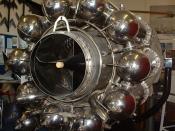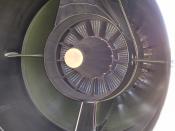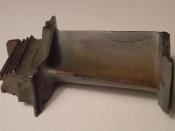The airplane is one of the most impressive pieces of machinery. It can carry tons of cargo, fly well over one hundred miles per hour several thousand feet in the air, and is one of the safest forms of transportation on the planet. Even with these amazing assets many people still do not want to fly.
One of the best features of an airplane is that it is so fast. There are engines called turbines, which are very powerful and create several thousand pounds of thrust. A jet engine uses a fan on the front to suck in air, mixes it with burning fuel, and blasts the expanded air-gas mixture out the back. In the process, it turns a turbine in the back of the engine that spins the fan in the front. Because every action has an equal and opposite reaction, a jetliner surges forward as its engines push air backward.
High-bypass-ratio fanjets are the most reliable engines ever developed. Fanjets are fuel efficient and quiet turbine engines. A fanjet engine has three sections called the fan unit and compressor section, the combustion chamber, and the turbine section. The compressors pressurize air and send it back. Most goes around the engine core through a cone-shaped chamber. The rest goes through the engine core where it mixes with fuel and ignites. The hot gas is pushed through the turbine section from expanding and it spins the turbine as it exits the engine. The spinning turbine turns the engine shaft. The rotating shaft spins the fan on the front of the engine. The fan compresses more air and keeps the cycle going.
Another reason that planes go so fast is because of the exstensive tests for the top aerodynamics. An airplane wing has a distinctive shape called an airfoil. Seen...



Lacking specific examples
This essay would be excellent if you could cite specific examples ... perhaps compare a 747 to a Concorde?
Various aircraft would naturally have different designs to suit their various purposes.
Perhaps you might want to include why the Concorde is being taken offline despite its record breaking speeds.
1 out of 1 people found this comment useful.